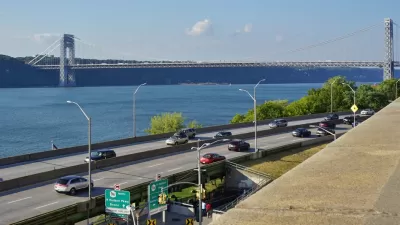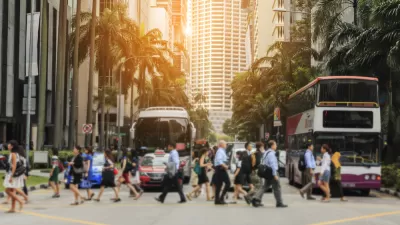Like New Zealand, another island has achieved success in reducing viral spread. The ability to quarantine travelers to Hawaii was crucial, but the virus had already arrived. Health professionals played key roles which, at times, led to conflict.

"Few people look to the United States for coronavirus success stories, instead singling out South Korea, New Zealand, Iceland or Germany," writes Honolulu-based freelance journalist Melanie Warner for the June 21 issue of POLITICO Magazine (see "Letter from Honolulu as well as the source article).
With 28,000 travelers pouring into Hawaii every day during the months of January and February, 20 percent of them from Asia, the state seemed fertile ground for a major Covid-19 outbreak. That was especially true on Oahu, where at least one-third of the state’s visitors cram into the hotels, stores, restaurants and beaches that line Waikiki’s 2 miles. Even without tourists, Oahu, where the bulk of the state’s population lives, is jam-packed—significantly more so than New Jersey, the nation’s most densely populated state.
But a catastrophe never came. Instead of a massive, uncontrolled outbreak, Hawaii has recorded the fewest Covid-19 cases per capita in the country. As of this writing, just one person per 100,000 has died (17 in total), and 54 per 100,000 have tested positive (762 in total**). By comparison, New Hampshire and Rhode Island, two states with similar population counts, have caseloads of 406 and 1,546 per 100,000, respectively.
Hawaii took advantage of its geography, i.e., being an island. It imposed and enforces a mandatory 14-day self-quarantine for arrivals, but what about the virus already in the state?
In the weeks before the arrival quarantine went into effect in late March, many expected the virus to have spread far more widely through the population than it did.
That it didn’t, and that Hawaii has continued to keep cases low, is a function not of the usual dynamics—the top-down operation helmed by a high-profile leader, as in states like New York and Michigan or countries like New Zealand and China. Hawaii’s success came at the hands of several medical doctors...
Warner goes on to describe the roles the three doctors played in suppressing the virus:
- Sarah Park, Hawaii’s top epidemiologist, who led what appears to have been the nation's most effective contact tracing team
- Lt. Gov. Josh Green, who continues his work as an ER doctor, whom one commenter at the end of the article described as Hawaii's "Dr. Fauci."
- Scott Miscovich, a self-described infectious disease wonk who is a partner and co-founder of Premier Medical Group Hawaii.
As for the issue that divided the health professionals, it involved two of the four key public health measures necessary to "box in the virus" that are supposed to be complementary but instead became contentious.
The state epidemiologist
"Park is a pediatric infectious disease specialist and practicing physician who formerly served as an officer for the Epidemic Intelligence Service, an arm of the federal Centers for Disease Control and Prevention," wrote Brittany Lyte of Honolulu Civil Beat.
The EIS is an elite team of detectives that probe medical mysteries and public health emergencies around the world. Doctors in the EIS are responsible for discovering the deadly Ebola virus, linking tampon use to toxic shock syndrome and eradicating smallpox in Africa.
As she choreographs Hawaii’s top team of disease busters, Park has become the center of controversy. Critics say she has led us down the wrong path in a number of ways — testing, accessibility to data, even her personality gets in the way.
"Park’s [contact tracing] team, which eventually grew to nearly 100 people, including volunteers, has hunted down contacts for all of the state’s 762 confirmed cases to date**, largely cutting off the virus as it sought new hosts," writes Warner.
While Jeff Engel, a Covid-19 senior adviser at the Council of State and Territorial Epidemiologists, hasn’t done a comprehensive survey of state epidemiologists, he says he is not aware of another state that managed this. Contact tracing is most productive when cases are either stable or trending downward and represent a small percent of the population, but many states are only now hiring and training armies of investigators to ramp up their contact tracing efforts.
The activist doctor
"Scott Miscovich had spent much of January and February reading any Covid-19 data he could get his hands on," continues Warner.
He didn’t like what he was seeing. “I was very concerned about the contagious nature of the virus, and I was thinking about Hawaii’s location as the gateway to Asia,” says Miscovich, who runs eight health clinics and urgent care facilities throughout the islands. In late January, he had started placing large orders for personal protective equipment—white Tyvek suits, plastic face shields, N95 masks, hand sanitizer—for his 120-person staff, while the equipment was still available and affordable.
Upon finding his first Covid+ patient in February, "Miscovich immediately got on the phone with the department of health, which at the time was the only lab in the state able to do testing," adds Warner.
“I’m thinking this is a slam-dunk case, but they say, ‘Hmm, nope. Did he travel from Wuhan? Was he in China? The CDC says we don’t test them.’”
But from his research on Wuhan and other outbreaks in Asia, Miscovich had concluded that widespread testing was an indispensable tool, a way to know where the virus was going so you could stop it. That the department of health didn’t seem to share this view was alarming.
Disunity: Testing vs. Tracing
Normally, testing and tracing go hand-in-hand. But there was a shortage of testing at the time.
“Early on, the testing restrictions were very specific, from CDC and FDA,” Park says, for her part. “Unlike private labs, public labs are held to very close scrutiny and standards, so if we start doing things not in alignment with what federal law requires, we’re jeopardizing our ability to practice.”
Furthermore, Park didn’t think it was necessary to test the contacts of infected people that her team had found.
“If you’re a close contact and you’re negative, you’re still stuck in quarantine, and we’re still monitoring you. There’s no get-out-jail-free card,” she explains. She says she was focused on preserving limited testing supplies for those most likely to spread the disease—people with significant symptoms, especially hospitalized patients, health care workers and seniors in long-term care facilities."
Miscovich went on to do his own coronavirus testing, developing one of the nation's first drive-through facilities on March 21 with the cooperation of Honolulu Mayor Kirk Caldwell and support of Lt. Gov. Green.
So far, Miscovich and his team have done 17,000 tests, about a quarter of the state’s total, including nearly a quarter of Hawaii’s positive results. In March and April, when Hawaii’s cases were building, his tests accounted for almost half the state’s total tests and 40 percent of its positives. In late March, Hawaii ranked seventh in the nation for per capita tests. (Today, with a relatively low caseload, it ranks near the bottom.)
While they didn’t see eye to eye, Miscovich’s work effectively fed into Park’s: Each new case he identified was one more that she and her team could trace, isolating people and breaking the chain of transmission.
"What’s remarkable about Hawaii’s success is how much of it was driven by Miscovich’s and Park’s determination," continues Warner. Meanwhile, David Ige, the state’s two-term Democratic governor, has not gotten high marks from the public unlike Green, the lieutenant governor, who emerged as one of the state’s most vocal leaders on Covid-19.
However, Ige deserves credit for the quarantining of travelers to the islands, which is incrementally being lifted in order to reopen the tourist-dependent economy.
Ige is expected to announce that Hawaii will allow visitors into the state quarantine-free if they have a negative test upon boarding the plane. The program, similar to what Alaska and Iceland have implemented, would still require those without a recent test to quarantine.
The lesson?
With arguments still flaring up across the country about the most effective way to manage the coronavirus response—often divided between those who want a heavy government hand and those who don’t—Hawaii’s experience shows that sometimes what works best is a multipronged, even redundant approach.
Footnote: **Infections are on the upswing. The health department lists 816 COVID-19 total cases on June 22.
Related in Planetizen:
- Coronavirus Success Stories, June 8, 2020
-
Another State (Ohio) Gets It Right, April 14, 2020
-
Learning from Seattle, Apr 7, 2020
-
[South Korea Showcases Coronavirus Testing], March 13, 2020
Hat tip to Renuka Rayasam.
FULL STORY: How Hawaii Became a Rare Covid Success Story

Maui's Vacation Rental Debate Turns Ugly
Verbal attacks, misinformation campaigns and fistfights plague a high-stakes debate to convert thousands of vacation rentals into long-term housing.

Planetizen Federal Action Tracker
A weekly monitor of how Trump’s orders and actions are impacting planners and planning in America.

In Urban Planning, AI Prompting Could be the New Design Thinking
Creativity has long been key to great urban design. What if we see AI as our new creative partner?

King County Supportive Housing Program Offers Hope for Unhoused Residents
The county is taking a ‘Housing First’ approach that prioritizes getting people into housing, then offering wraparound supportive services.

Researchers Use AI to Get Clearer Picture of US Housing
Analysts are using artificial intelligence to supercharge their research by allowing them to comb through data faster. Though these AI tools can be error prone, they save time and housing researchers are optimistic about the future.

Making Shared Micromobility More Inclusive
Cities and shared mobility system operators can do more to include people with disabilities in planning and operations, per a new report.
Urban Design for Planners 1: Software Tools
This six-course series explores essential urban design concepts using open source software and equips planners with the tools they need to participate fully in the urban design process.
Planning for Universal Design
Learn the tools for implementing Universal Design in planning regulations.
planning NEXT
Appalachian Highlands Housing Partners
Mpact (founded as Rail~Volution)
City of Camden Redevelopment Agency
City of Astoria
City of Portland
City of Laramie





























